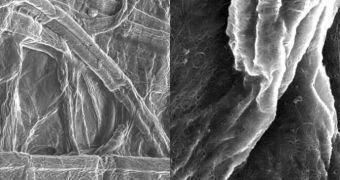Using little more than average office paper, a group of scientists has been able to produce batteries that are both printable and moldable. The achievement is very important because it opens the way for production processes, which could see the manufacturing of computers, cell phones and solar panels from this new material. Details of the paper/nanotube ensemble appear online, in the December 7 Early Edition of the respected journal Proceedings of the National Academy of Sciences (PNAS).
“Power storage is one of the very important aspects of solving the energy issue,” Rensselaer Polytechnic Institute (RPI) expert Robert Linhardt says. He adds that the innovation, which relies on nothing more than a special type of paper and carbon and silver nanomaterials, shows great promise for its purpose. The scientist explains that the recent accomplishment was made possible by the fact that the paper's structure made it look and act like a tangled matrix of fibers, when viewed on the nanoscale. This makes it an ideal medium for nanotubes, the investigator reveals, quoted by Wired.
Stanford University expert Yi Cui, who is the coauthor of the new work, reveals that nanotube ink adheres to the porous surface of cellulose in very much the same way average ink does. Cui says that the nanotubes “get caught very tightly to the cellulose,” which allows the paper to act like a scaffold, while the nanotubes act like electrodes. According to the scientist, this approach offers a potent alternative to metal-based energy-storage systems. There is nothing more keeping the ensemble together than classic electrostatic forces, the SU scientist says.
The battery in itself is obtained by taking two sheets of paper that have been previously printed with nanotube ink, and then placing a sheet of average paper, untouched, between them. The entire ensemble is then placed in an electrolyte solution. Conductive paper – the type that can be bent and rolled – is also possible with the new approach, Cui adds. The expert group also managed to harvest the energy generated by the paper in order to power up a light-emitting diode (LED).

 14 DAY TRIAL //
14 DAY TRIAL //